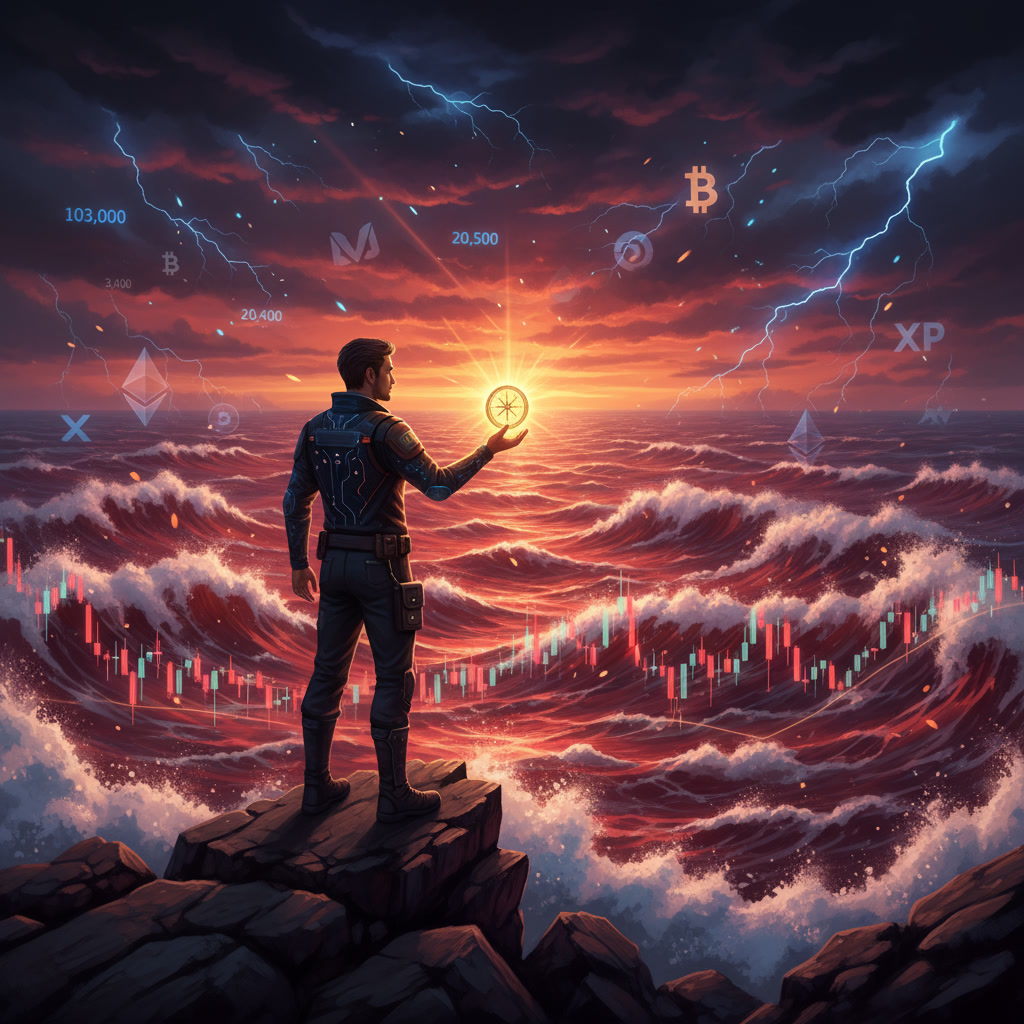The cryptocurrency landscape is exhilarating, volatile, and notoriously crowded. With thousands of projects vying for attention and investment, distinguishing genuine innovation from fleeting hype or outright scams is paramount. Relying on superficial factors like price surges or social media buzz is a recipe for disaster. Instead, savvy investors focus on fundamental indicators that reveal a project’s underlying health, potential, and commitment to long-term success. Here are five critical signals that a crypto project is truly worth your time and due diligence, expanded with deeper analysis:
-
A Proven, Doxxed, and Accessible Team: The Cornerstone of Trust
-
Beyond Names on a Website: Look for a team with verifiable identities (“doxxed”), professional backgrounds (easily traceable on LinkedIn), and demonstrable expertise relevant to the project’s goals. A team claiming blockchain experience should have provable history in the space; a DeFi project needs finance/coding experts; a gaming project needs game developers.
-
Track Record Matters: Have they successfully delivered projects before? Have they navigated bear markets? Experience in building and scaling technology companies is a huge plus. Beware of anonymous teams or those with fabricated credentials – transparency is non-negotiable for trust.
-
Active Engagement: Are team members actively participating in AMAs (Ask Me Anything sessions), community forums, developer calls, or industry conferences? Regular communication demonstrates commitment and accountability. Check if their claimed past affiliations or companies actually exist and align with their stated experience.
-
Red Flag: Entirely anonymous founders, team members with unverifiable or dubious past “successes,” or a lack of any public engagement.
-
-
A Clear, Realistic, and Progress-Tracked Roadmap: The Blueprint for Execution
-
Specificity Over Vague Promises: A strong roadmap isn’t just a list of buzzwords (“Q3: Launch Ecosystem”). It details specific, measurable, achievable, relevant, and time-bound (SMART) milestones. What exactly is being built, tested, or launched? What are the key performance indicators (KPIs) for success?
-
Transparency in Progress: Crucially, does the project consistently report on its progress against this roadmap? Regular updates (monthly/quarterly) detailing achievements, challenges, and any necessary adjustments are vital. Look for evidence on their official blog, GitHub repository activity, or community updates.
-
Adaptability & Honesty: The crypto space evolves rapidly. A good project demonstrates the ability to adapt its roadmap based on market changes, technological hurdles, or community feedback, while clearly communicating these changes and the reasoning behind them. Missing deadlines isn’t automatically fatal, but how they handle it (transparency vs. excuses) is telling.
-
Red Flag: Roadmaps filled with overly ambitious, undeliverable promises (“become the global reserve currency by 2025”), a complete lack of progress updates, consistently missed deadlines without explanation, or frequent, major pivots with no clear rationale.
-
-
A Vibrant, Engaged, and Organic Community: The Lifeblood and Early Warning System
-
Quality Over Quantity (Initially): While large follower counts can be enticing, focus on the quality of engagement. Are community members asking insightful technical questions, discussing use cases, helping each other, or participating in governance (if applicable)? Or is the chat dominated by relentless price speculation and “moon” chants?
-
Official Channels & Moderation: Check the project’s official Discord, Telegram, X (Twitter), and forum. Are admins and team members active? Is discussion constructive? Is misinformation quickly corrected? Good moderation fosters a healthy environment.
-
Organic Growth vs. Bots: Be wary of communities that exploded overnight with generic, low-effort comments – this can indicate paid bots or airdrop hunters. Look for steady, organic growth and genuine enthusiasm.
-
Community Contributions: Does the community actively contribute? This could be through building tools, creating educational content, translating materials, or participating in testnets. A passionate, contributing community is a powerful asset and validation.
-
Red Flag: Echo chambers of pure hype, rampant FUD (Fear, Uncertainty, Doubt) with no team response, obvious bot activity, or communities primarily focused on recruiting for pyramid-like schemes.
-
-
Genuine Technological Innovation or a Compelling, Well-Executed Value Proposition: Solving a Real Problem
-
Beyond the Whitepaper: Does the project offer a tangible solution to a real problem in the blockchain space or the wider world? Is it significantly better than existing solutions (faster, cheaper, more secure, more scalable, more user-friendly)? Does its technology have a clear purpose?
-
Technical Depth & Differentiation: Read the technical documentation or whitepaper (at least the summaries/overviews). Does it explain the core innovation clearly? What makes it unique? Is it just a fork of another chain with a token tacked on, or does it introduce novel consensus mechanisms, privacy features, scaling solutions, or unique tokenomics?
-
Working Product/Prototype (MVP): Ideally, the project should have a live Mainnet, a functional testnet, or at least a robust Minimum Viable Product (MVP). Can users actually interact with the core technology? Code is king. High GitHub activity (meaningful commits, not just updates) is a strong positive signal.
-
Red Flag: Vague technical claims with no substance, solutions desperately seeking a problem, blatant copying of other projects with minor tweaks, excessive reliance on buzzwords (“AI-powered,” “quantum-resistant” without explanation), or no functional product after years of development and funding.
-
-
Unwavering Transparency and Good Governance: Building Trust Through Openness
-
Open Financials: Is the project transparent about its treasury management? How are funds raised (ICO, VC, etc.) being used? Are there regular financial reports? Knowing token allocation (team, advisors, treasury, public sale) and vesting schedules (preventing immediate dumps) is crucial.
-
Clear Tokenomics: Understand the token’s utility. Is it essential to the network’s function (e.g., staking, fees, governance)? What’s the inflation rate? What mechanisms control supply and demand? Avoid tokens that seem solely designed for speculation with no inherent purpose.
-
Audits & Security: Have the project’s smart contracts undergone rigorous, independent audits by reputable firms? Are the audit reports publicly available? Are vulnerabilities addressed promptly? Security is paramount.
-
Governance Mechanisms: Does the project have a clear, fair process for community governance? How are decisions made about protocol upgrades, treasury spending, or key initiatives? On-chain governance, while complex, offers high transparency.
-
Red Flag: Opaque finances, lack of smart contract audits (or only audits from obscure firms), convoluted or predatory tokenomics designed to enrich insiders, refusal to answer tough questions about funds or token distribution, or a completely centralized decision-making process with no community input.
-
Beyond the Signals: The Imperative of Continuous Due Diligence
Spotting these five signals is an excellent starting point, but it’s not a guarantee of success. The crypto space is dynamic and inherently risky. Always:
-
DYOR (Do Your Own Research): Never invest based solely on this list or any single article. Dig deep into the project’s resources.
-
Understand the Risks: Cryptocurrencies are highly volatile and speculative. Only invest what you can afford to lose.
-
Beware of Hype: Fear Of Missing Out (FOMO) is a dangerous motivator. Stick to your analysis.
-
Consider the Macro Environment: Regulatory shifts, broader market trends (bull/bear markets), and technological advancements can significantly impact any project.
-
Check Regulatory Compliance: Is the project taking steps to operate within existing or emerging regulatory frameworks? This is increasingly important.
Conclusion: Navigating with Confidence
Identifying crypto projects with genuine potential requires moving beyond the noise and focusing on foundational pillars: a credible and transparent team, a realistic and accountable roadmap, a healthy and engaged community, verifiable technological substance or value, and unwavering operational transparency. By rigorously applying these filters and committing to continuous, independent research, you significantly increase your ability to navigate the complex crypto ecosystem and allocate your time and resources to projects built for longevity and real-world impact, rather than fleeting speculation. Remember, in crypto, patience, skepticism, and thorough due diligence are your most valuable assets.


 Want to stay updated with the latest insights and discussions on cryptocurrency?
Want to stay updated with the latest insights and discussions on cryptocurrency? For collaborations and inquiries:
For collaborations and inquiries: 

